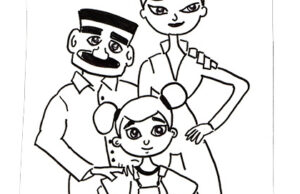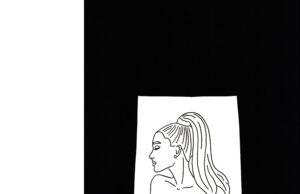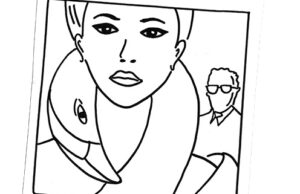Netflix’s “The House” is enchantingly haunting
Featuring the voices of Matthew Goode and Helena Bonham Carter, Netflix recently released an eerie stop motion animation feature titled “The House.” The one-and-a-half-hour anthology series is divided into three chapters, each following the unfortunate events of a house’s current occupant. Each story takes place in a different era with the only connecting variable being the seemingly cursed building. There are distinct themes for each episode, such as the horrors of materialism, loss of self-identity or letting go of a dream.
The most impressive aspect of the series, and deservingly so, are the visuals. Stop motion has the power to feel cozy or unsettling; “The House” accomplishes both and beyond. The delicate character models resemble dolls, but the emotions they convey push the barrier between animation and reality. The series features humans, rats, bugs and cats, all with the power to connect to their audience through beautiful design and impeccable voice-over acting.
The first chapter watches over a family who lets their desire for posh and material items consume them. In this episode, the origin of the house is introduced, involving a struggling father and an ill-fated contract. It is done so in a way to demonstrate how this house will never truly be a home. The shots are direct in showing where exactly the family went wrong and the effect they leave on generations to come. Though there is a prevalent theme on the negatives of materialism, this episode, as well as the rest of the series, is best enjoyed when the viewer interprets the subject matter for themselves.
In the second story, the characters infesting the house are no longer humans, but rats and bugs: vermin. The main character, a rat, has no name but is credited simply as “Developer” and is somewhat of an antihero. This episode might be the most disturbing of them all. It is strong in maintaining its labeled genre as a “dark comedy” with amusing hijinks at the start, but a nightmarish twist ending. Watching beside a friend, we both developed slightly different ideas on the message this episode was illustrating, but I find that to be the beauty of this series.
As the show succumbs to its final chapter, the house has become a failing motel belonging to a cat named Rosa. The story, as well as the scenery, is the brightest of the three episodes. Although limited to nearly half an hour, the articulation of each character’s behavior does not go unnoticed. The year that this episode takes place is unclear, but it does not matter because of how encapsulating and empathetic the narrative is. Every character is endearing with no antagonists other than the characters’ inner demons.
What makes this series stand out from the countless other movies that Netflix releases is the originality it brings to this era of cinema. An anthology series is not a new concept to media, but combining it with the elements of animation, let alone stop-motion animation, can almost sound a little excessive. “The House” proves this wrong by combining the elements of powerful and purposeful storytelling, eccentric directorial choices and the artistry of animation.



